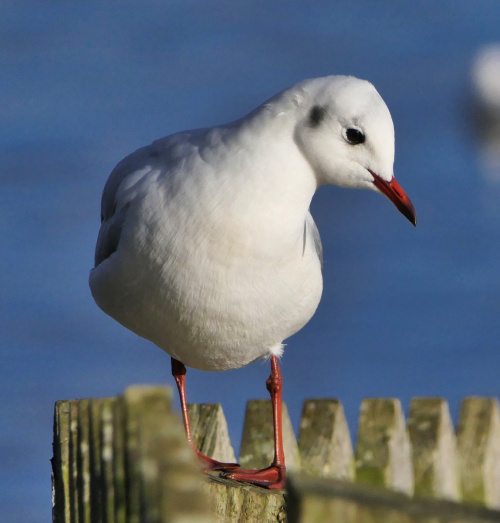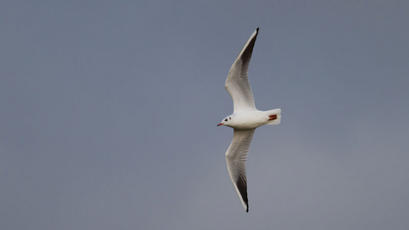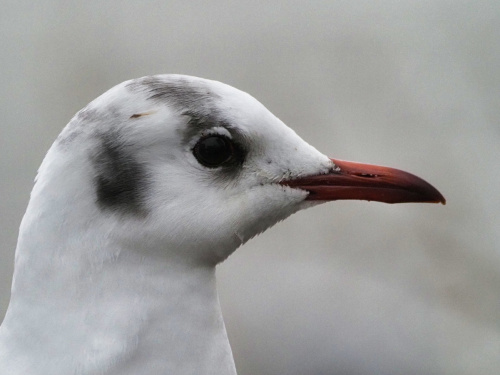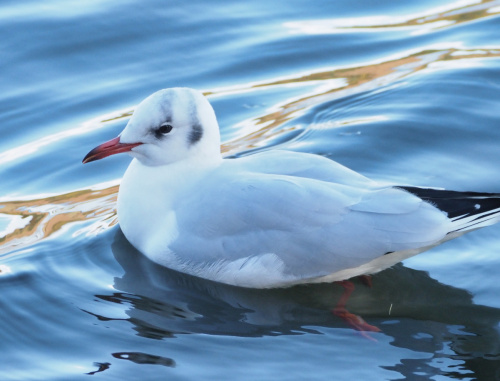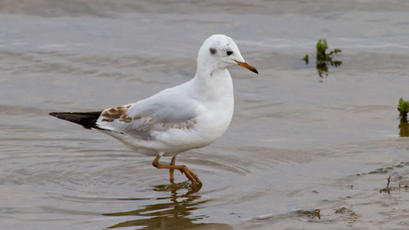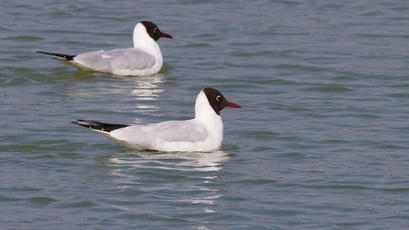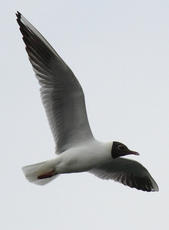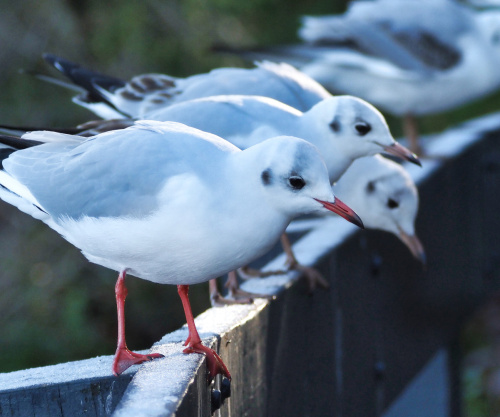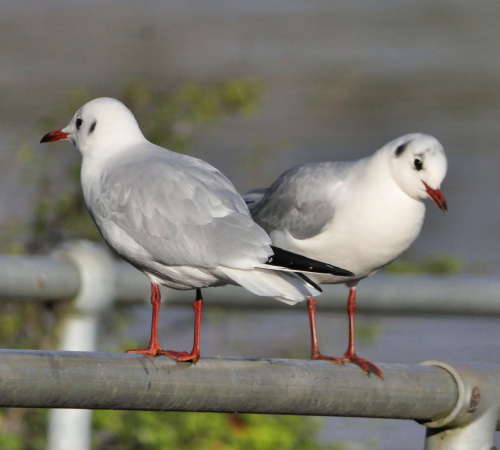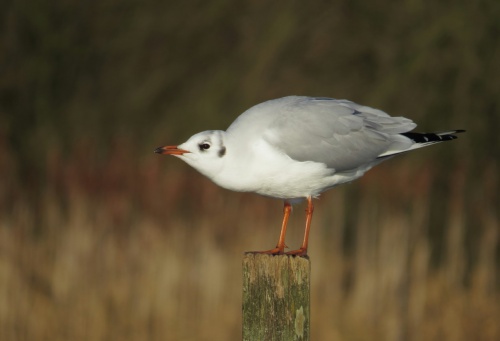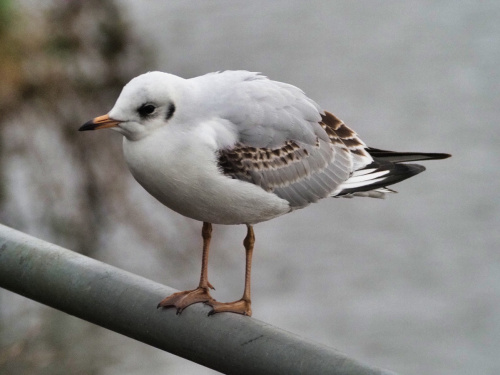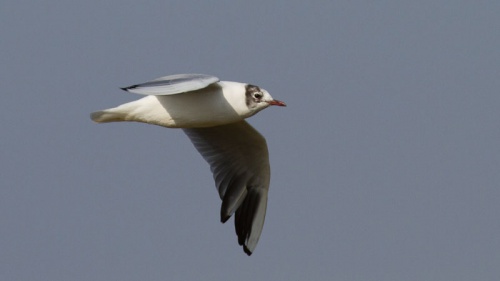Black-headed Gull - Chroicocephalus ridibundus
Not really a black-headed bird, more chocolate-brown - in fact, for much of the year, it has a white head with just a dark streak. It has red legs all year round. Juvenile gulls can be harder to identify and have brown lines on their wings and a speckled breast. The bill and legs are red or bright red in the adult but paler and orangey in the juvenile and sub-adult birds.
The commonest inland gull, particularly in northern England, Scotland and Wales. Large colonies along the south and east coasts of England.
All year round
It is most definitely not a 'seagull' and is found commonly almost anywhere inland. Black-headed Gulls are sociable, quarrelsome, noisy birds, usually seen in small groups or flocks, often gathering into larger parties where there is plenty of food, or when they are roosting.
Common and widespread in Britain
Abundant in Leicestershire and Rutland, but uncommon as a breeding bird here
Leicestershire & Rutland Map
Enter a town or village to see local records
MAP KEY:
Yellow squares = NBN records (all known data)
Coloured circles = NatureSpot records: 2025+ | 2020-2024 | pre-2020
UK Map
Species profile
- Common names
- Black-headed Gull
- Species group:
- Birds
- Kingdom:
- Animalia
- Order:
- Charadriiformes
- Family:
- Laridae
- Records on NatureSpot:
- 2140
- First record:
- 03/07/1995 (Ian Retson)
- Last record:
- 14/04/2025 (Messenger, Nigel)
Total records by month
% of records within its species group
10km squares with records
The latest images and records displayed below include those awaiting verification checks so we cannot guarantee that every identification is correct. Once accepted, the record displays a green tick.
In the Latest Records section, click on the header to sort A-Z, and again to sort Z-A. Use the header boxes to filter the list.




